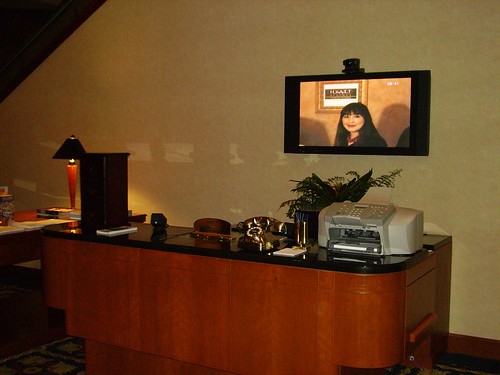Great article on blogs and power law dynamics that showed up on my desk this morning, from New York magazine.
“When [Clay] Shirky compiled his analysis of links, he saw that the smaller bloggers’ fears were perfectly correct: There is enormous inequity in the system. A very small number of blogs enjoy hundreds and hundreds of inbound links—the A-list, as it were. But almost all others have very few sites pointing to them. When Shirky sorted the 433 blogs from most linked to least linked and lined them up on a chart, the curve began up high, with the lucky few. But then it quickly fell into a steep dive, flattening off into the distance, where the vast majority of ignored blogs reside. The A-list is teensy, the B-list is bigger, and the C-list is simply massive. In the blogosphere, the biggest audiences—and the advertising revenue they bring—go to a small, elite few. Most bloggers toil in total obscurity.
Economists and network scientists have a name for Shirky’s curve: a “power-law distribution.” Power laws are not limited to the Web; in fact, they’re common to many social systems. If you chart the world’s wealth, it forms a power-law curve: A tiny number of rich people possess most of the world’s capital, while almost everyone else has little or none. The employment of movie actors follows the curve, too, because a small group appears in dozens of films while the rest are chronically underemployed. The pattern even emerges in studies of sexual activity in urban areas: A small minority bed-hop, while the rest of us are mostly monogamous.
The power law is dominant because of a quirk of human behavior: When we are asked to decide among a dizzying array of options, we do not act like dispassionate decision-makers, weighing each option on its own merits. Movie producers pick stars who have already been employed by other producers. Investors give money to entrepreneurs who are already loaded with cash. Popularity breeds popularity.”
That being said, there are a couple of implications.
If being an A-lister matters to you, you need to write quality, and write it often. And then, make sure that others can find it. As inequitable as it is, the best way to do that is get the notice of the A-listers by linking. It’s an artifact of the way PageRank, etc. works. As I’ve said before, a link is a blunt instrument and the crudest of social gestures. But it’s what we have for right now.
If writing for and serving a particular focused market is the thing that matters, just write, write often, and write on-topic. The search engines will find you.
On the other hand, notice from the above that while the “short head” gets the big traffic, the real numbers are in the long tail. Providing a way to connect those individuals en masse opens up another route to success. More on this soon.
Update: Hugh weighs in as well.












